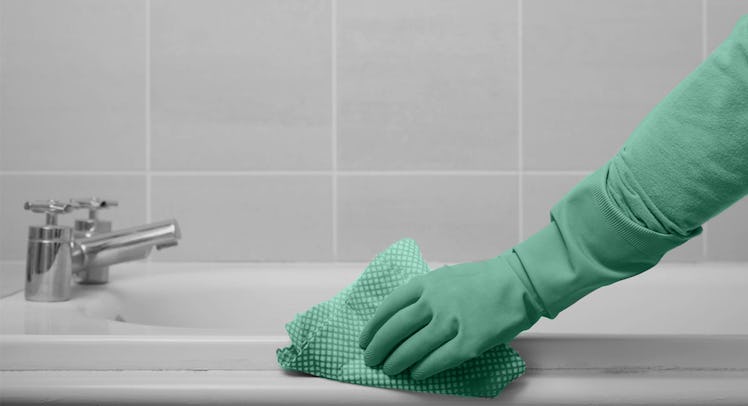How to Clean a Bathtub Without Poisoning Your Kid
When cleaning a bathtub, parents should think about timing, rinsing and the possibility that chemicals could linger and harm a kid’s skin.

Parents start to question the cleanliness of the bathtub after seeing grime transfer from a child’s body into the bathwater and into a ring of filth around the edges. Worse still is when a kid lets a floater loose among the Mr. Bubbles or sighs as they pee into the warm water. It’s enough to make a parent reach for the nuclear cleaning option to purify the porcelain and destroy all the disgusting things that must now be infecting the bathtub. But it turns out there’s little need to worry and no reason to reach for industrial-strength solvent.
“Tubs probably need to be cleaned at least once a week because soap scum and grime can build up,” explains Dr. Norina Ocampo, a pediatrician with Tenet Florida Physician Services in Boca Raton, Florida. “The best time is to clean right after a bath so there’s 24-hours before the child gets in again.”
A bathtub is frequently rinsed, dries between uses, and is often full of soap. What this means is that it’s a less than ideal location for pathogens parents fear, like bacteria and viruses, because there is no welcome substrate, or surface, to grow on. Ocampo still urges parents to rinse their tub every week and, ideally, regularly, but he also urges parents not to be overly aggressive, reiterating that cleaners can present more of a danger that trace pathogens.
“Some cleaners can be respiratory irritants and some can irritate the skin,” Ocampo says. “Definitely don’t clean a bathtub right before a bath.”
How to Safely Clean the Family Tub
- It’s only necessary to clean once a week, but rinse off soap residue and grime from the tub surface between uses
- Don’t clean a bathtub right before bathtime, particularly if you prefer harsh chemical cleaning products
- Rise cleaners from the tub surface thoroughly and allow plenty of time for the bathroom to air out before use
- Natural cleaners like baking soda, vinegar, Castile soap and tea-tree oil are good kid-safe alternative but can cause allergic reactions
Allowing that time means a tub can dry after a good rinse and be rinsed again for good measure. It also means that any fumes can dissipate before the next use. That said, Ocampo notes that tile and porcelain is porous. That leaves a strong possibility that harsh cleaning products could leach into a bath even after a thorough rinsing.
The problem of lingering chemicals can be exacerbated by products that offer an ability to cling to a vertical surface. These products are much harder to rinse because they’ve been made to cling. That means that chemical residue will likely stay behind even after rinses. Better for kids’ bottoms are products like baking soda, vinegar and castile soap. Castile soap offers a gentle clean, vinegar promotes shine, and baking soda is a gentle abrasive to remove pesky tub rings. A few drops of tea tree oil can even offer anti-bacterial protection. But, Ocampo warns, “Some people might be allergic. It can trigger a respiratory allergic reaction.”
Still, these products are way cheaper than chemical brands, as well as being safe enough that kids can use them themselves. Which means they have no excuse but to clean up after their last floater. It’s a good lesson in hygiene and fun if they’re given a squirt bottle and a light touch on supervision.
This article was originally published on